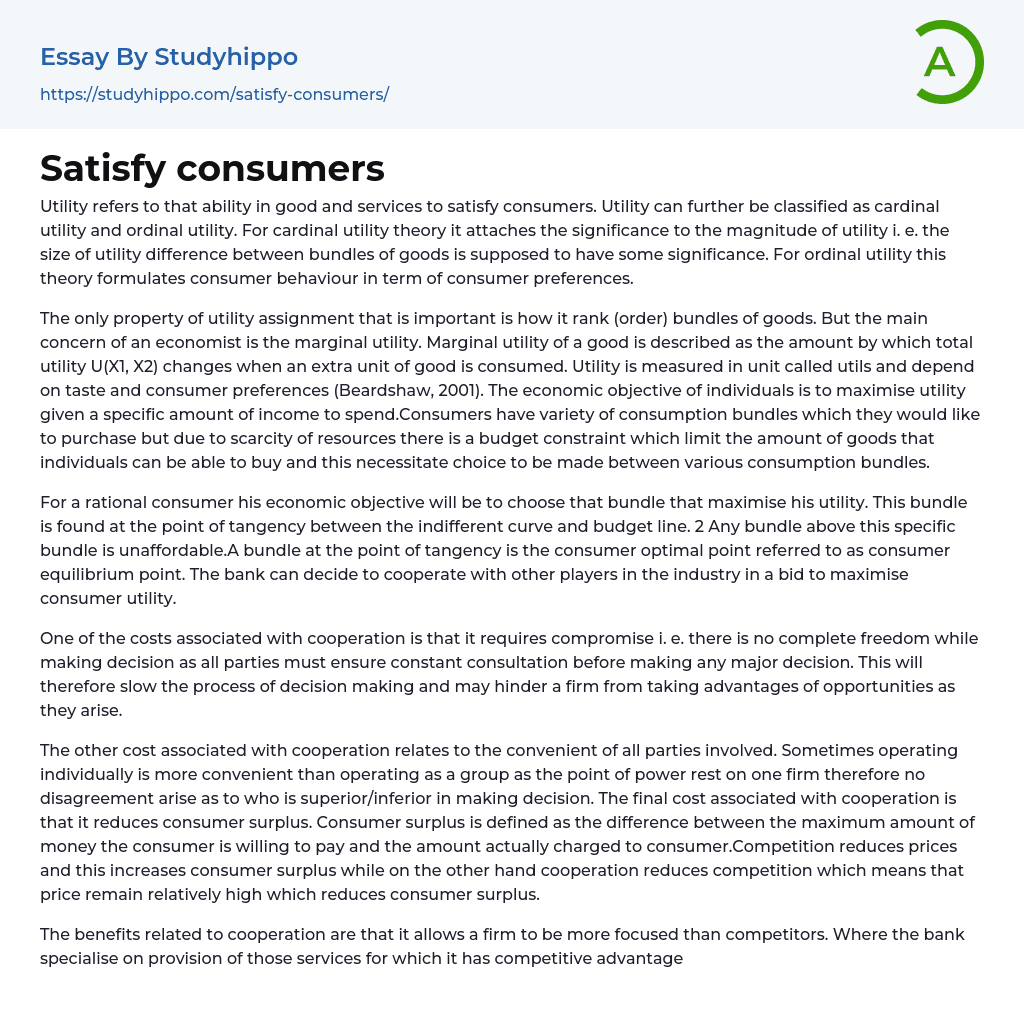Utility is the capacity of goods and services to meet consumers' needs. This can be classified as cardinal utility and ordinal utility. Cardinal utility theory focuses on the magnitude of utility and the significance of the difference in utility between sets of goods. Ordinal utility theory, meanwhile, explains consumer preferences in terms of consumer behaviour.
The main concern for economists is the marginal utility of goods, which measures the change in total utility (measured in utils) when an extra unit of a good is consumed. Utility depends on consumer preferences and the goal for individuals is to maximize their utility while staying within their income. However, due to limited resources and budget constraints, consumers must make choices among various consumption bundles. Overall, what matters for utility assignment is the ranking of bundles of goods.
Maximizing utility is th
...e main goal for a rational consumer, achieved by selecting a bundle of goods at the point where the budget line intersects with the indifference curve. Any bundle above this optimal point is beyond their means. Known as the consumer equilibrium point, this optimal bundle is where the consumer can be most satisfied. The bank may opt to collaborate with others in their field in order to enhance consumer welfare.
Cooperation comes at a cost which involves compromising. Decision-making is not entirely free since all parties involved must engage in constant consultation before making any major decisions. Consequently, this may slow down the decision-making process and prevent a firm from seizing opportunities as they come.
Cooperation can incur various costs, including convenience for all parties involved. In some cases, operating individually may be more convenient since power rests on one firm,
avoiding disagreements over decision-making superiority. Another cost of cooperation is reduced consumer surplus, which is the difference between the maximum amount a consumer is willing to pay and the actual amount charged. While competition lowers prices and increases consumer surplus, cooperation reduces competition and maintains relatively high prices, diminishing consumer surplus.
Cooperation benefits firms by allowing them to be more focused than their competitors. Specifically, when a bank specializes in providing services for which it has a competitive advantage, it can better satisfy the market's needs and capture a larger market share, thereby staying ahead of its rivals (Gottlheil, 2002). Conversely, if a bank operates individually, it may become less competitive in the market as it is unable to specialize. This could lead to lowered utility in its services, causing it to lose customers and reducing its competitive advantage.
Having the ability to make decisions freely and take advantage of opportunities as they arise is an advantage of individual bank operations. Additionally, operating individually is more convenient than as a group, as there is no power struggle, providing greater flexibility in making strategic decisions. Moreover, competition is increased through individual actions, reducing prices and increasing consumer surplus (Hubbard & Obrien, 2006). Reference: Beardshaw, J. (2001). Economics: a student's guide.
Harlow, among others, authored the Financial Times Prentice Hall alongside Gottlheil, F.
The author, R. Hubbard, wrote "Principles of Economics" and it was published in 2002 by Thompson Learning in Cincinnati, Ohio.
G. and Obrien wrote "Microeconomics" in 2006.
The publication location of Prentice Hall's work is Upper Saddle River, NJ.
- Consumer behaviour essays
- Advertising essays
- Audience Theory essays
- Competitor Analysis essays
- Consumer essays
- Marketing Management essays
- Marketing Mix essays
- Marketing Plan essays
- Marketing Research essays
- Marketing Strategy essays
- Point Of Sale essays
- Price essays
- Procurement essays
- Product essays
- Product Differentiation essays
- Promotion essays
- Promotion And Marketing Communications essays
- Retailing essays
- Trademark essays
- Anheuser-busch essays
- Brands essays
- Detergent essays
- Product Placement essays
- Research Design essays
- New Product Development essays
- Advertisement essays
- Brand essays
- Sales Promotion essays
- Advertising campaign essays
- Offer And Acceptance essays
- Wal-Mart essays
- Discover essays
- John Locke essays
- 9/11 essays
- A Good Teacher essays
- A Healthy Diet essays
- A Modest Proposal essays
- A&P essays
- Academic Achievement essays
- Achievement essays
- Achieving goals essays
- Admission essays
- Advantages And Disadvantages Of Internet essays
- Alcoholic drinks essays
- Ammonia essays
- Analytical essays
- Ancient Olympic Games essays
- APA essays
- Arabian Peninsula essays
- Argument essays




